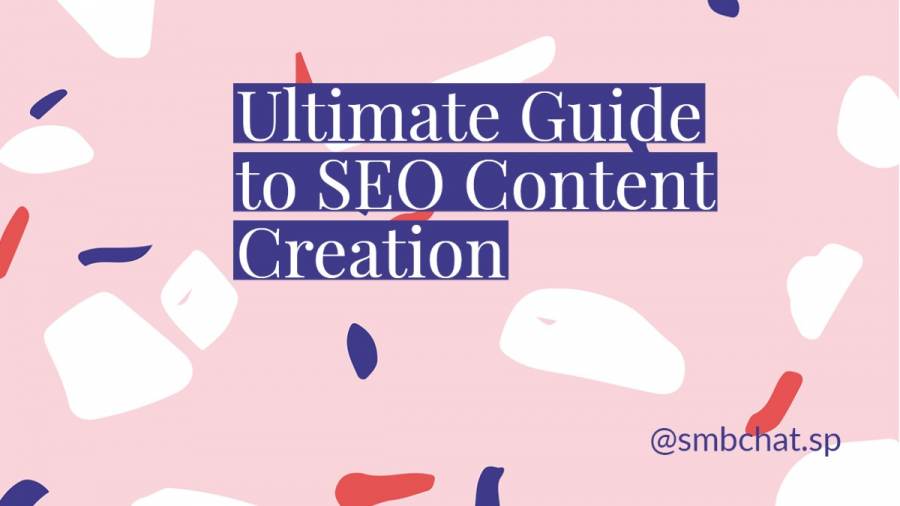Your CheatSheet to Writing a Blog that Captivates, Engages, and above all, Converts
"Give a man a fish, and you've fed him for a day. Teach him how to write blogs that convert, and you've fed him for eternity " Sun Tzu, the art of war.
When it comes to blog posts and content marketing, you've seen it all. You've probably read.
- How to write a killer blog post, enough times to die of misery
- 55 surefire tips to write content, more times than you need
- Blog writing 101, 101 times
We understand. You can’t take one more miserable or cliche post about blog writing, at least not today.
That's why it's essential that we make this one the last one you'll ever need.
Apart from subtle bits and pieces of comedic relief, and punctuations of stats and data, this is your no B.S guide to writing a prolific blog, the last one you'll ever read at that.
What is a Blog?
A blog is an online journal or an informational website that displays information in reverse chronological order.
A blog post is an entry in a blog. However, for our collective sanity, the words blog and blog post will be used interchangeably in this piece.
Steps to Writing a Great Blog
The blog writing process starts long before you find the topic you'll write about. Before you delve into the good stuff, there are a few things you have to get straight.
First things first, you should:
1. Know Why You're Writing in The First Place
All blog posts on the internet are not created the same.
Finding your “why” is probably the most essential aspect of writing your blog. It will give you a way forward, clarity of thought, a definition of success, and motivation.
If you are writing, it will probably be for the following reasons:
-
Lead Generation
Most business blogs you’ll find on the internet are content marketing tools used for lead generation purposes.
The idea of lead generation is luring prospective customers into your sales funnel through engaging content with the aim of conversion through landing pages or CTA’s.
-
Thought Leadership
If you’re writing a thought leadership article, presumably, your goal will be to establish your brand as a trusted voice in your industry.
Thought leadership pieces often seek to challenge accepted ideas, raise awareness on emerging issues, shine a light on problems or give a different perspective.
-
Education
You create educational pieces to equip your audience with the necessary knowledge to solve the problems they encounter on a daily basis.
But it’s not always black and white, most educational blogs like this one can also double up as lead generation blogs.
-
Fun
Who doesn’t love fun? Most people write because they love to. Writing is fun, relaxing, and therapeutic, making it something everyone should try at least once in their lifetime.
2. Want Relevant Content, Study Your Target Audience
You’d be shocked at the number of people who write blog content without knowing who they’re writing to in the first place.
Once you know why you're writing, the next logical question is knowing who you’re writing for.
This question calls for a careful study of your audience, their beliefs, and perspectives. When studying your answer, you’d presumably want to answer the following questions:
- Who is my target audience?
- What is my audience most passionate about?
- What motivates them to get out of bed each morning?
- What keeps them awake at 2 in the morning?
- What are their most pressing problems?
- What is their gender, current location, and beliefs?
That seems like a lot of questions to answer. However, don’t fret. It’s nothing a buyer persona can’t handle.
Hubspot defines your buyer personas as semi-fictional representations of your target audience. With one, issues about studying your audience become a thing of the past.
3. Build Your Blog Writing Tool Box
Like any other writer, you probably have memories of the day you discovered a writing tool that changed your life forever.
Once you’ve used it for a while, you start wondering how you ever survived without it.
With the amount of innovation out there, it’s essential to refresh your arsenal of writing tools once in a while.
These budget, cloud-based, and easy-to-use tools will improve your productivity and make your writing easier while at it.
They include:
- Google Docs for editing and creating sharable writing workflows
- Grammarly for all things Grammar(consider its Google Doc’s plugin)
- Frase IO your keyword research tool and Search Engine Optimization
- Co Schedules Free Headline Analyzer for help with writing headlines
- HARO for pitching interviews, chats, and discussions with industry readers
Getting Down and Dirty, Write a Blog Post That Converts
Once you have all the prerequisites required to write a blog, nothing stops you from getting that laptop and writing the blog that will be a turning point in your career.
The following steps will guide you as you write your blog.
1. Come Up With an Engaging Blog Post Idea
To a man with a hammer, everything looks like a nail. This is a problem you'll often face as you write your blogs; everything will look like a potential topic.
However, nothing can be farther from the truth. Not all stories deserve to be told, and not all topics deserve your time and attention.
This leads us to the next question. How do you choose a topic for your blog?
Well, it’s a lot easier than you may imagine. To create relevant content, consider the following steps:
- Create SEO based topic clusters
- Use a keyword research tool to narrow down on your audience's search intent
- Use Google Trends to find out what customers are interested in at the moment
- Keep track of what your competitors are writing about
- Think about emerging trends in your industry
- Check for long term relevance to ensure its evergreen content
- Look at your previous successful blogs and try to develop a pattern
2. Research Your Blog Post Idea
“What is research, but a blind date with knowledge” Will Harvey
Get your torch, detective raincoat, and magnifying glass. Also, pack enough willpower to last you a few hours, it’s research time.
Behind every successful blog post on the internet are hours upon hours of research. Once you know your audience, what’s left is researching all you need to know about your topic.
The best places to find research for your article include:
- Finding statistics and data from reputable sources
- Reading accomplished blogs and articles about your topic
- Searching for quotes from experts and thought leaders on the internet
- Consider going through perspectives on forums such as Quora and Reddit
3. Come Up With A Comprehensive Outline
Writing an outline is one of those hacks you’ll never know you need right until you discover it.
Heck, many will argue that outlines, skeletons, and templates are the best things to ever happen to writing since the QWERTY keypad.
An outline helps:
- Reduce the effects of writer's block
- Give your writing a sense of direction and a way forward
- Enable you to scribble points down as you research
Any blog at minimum has a physical outline and a logical outline that guide the flow of ideas.
The physical outline is nothing you’ve never seen before. Definitely, it’s familiar and includes:
- Introduction
- Body (write potential H2, H3, H4’s and scribble points)
- Conclusion
Almost any blog you read will follow this format. However, there’s a logical outline based on the sales funnel that people seldom talk about. This effective narrative structure comprises of:
-
Awareness
You make your reader aware of a pain point, issue or development.
-
Interest
You pique the interest of the reader in the problem and the ways to solve it
-
Decision
You stress the urgency, benefits, and general importance of the reader taking action.
-
Action
You prompt the reader to take action
Unlike the physical outline, you’ll only find a logical outline on the few blogs out there that convert. Without it, your blogs will lack a flow of ideas and seem all over the place.
4. Lure Your Blog Audience in With a Breathtaking Title
Blog writing has two essential rules. The first is that you ought to write a spectacular title. The second is to refer to rule number one, always.
Your title is the first impression you make with your reader. This leaves you with seven words give or take to convince some stranger on the internet that your blog is worth their time.
This makes the title the most important thing to a writer after finding your topic. Fortunately, the art of writing good titles is far from uncharted territory.
The following tips will give you a headstart in conjuring amazing titles:
-
Leverage Numbers
According to statistics, number headlines get 327% more traffic than question headlines
“Benefits of retiring early”
“30 reasons to retire at 30”
-
Leverage Data and Statistics
“Reasons Why Startups Fail”
“80% of startups fail, here’s why”
-
Arouse Your Audience's Attention
“Importance of America’s Emergency Oil Reserve”
“America has a Huge Stash of Emergency Oil; Here’s Why.”
-
Pull-On Your Audiences Heartstrings
“How to Write Better Blogs”
“Before you give up on blogging, a word”
-
Ask Questions
“Tips to write an Amazing title.”
“Tired of Resorting to Clickbait to write good titles; 5 Ways to Change Just that”
-
Challenge Long-Standing Beliefs
“Why you shouldn't go low on your mortgage payment.”
“10 reasons putting 10% down on your mortgage is a mistake.”
Whatever you do, never write clickbait. Also, leverage a lot of keyword research to add aspects of search engine optimization to your headline.
5. Conjure A Sizzling Introduction
Do you know what a blog introduction and pickup lines have in common?
Well, they lead to different forms of magic.
With a pickup line, you’ll either witness the magic of getting laid or the magic of a potential soulmate disappearing into thin air.
Your blog introduction is no different.
Once you mess up or miscalculate your introduction, you can rest assured that it's the farthest you’ll ever get with the potential reader.
Fortunately, the following tips are your cheat code to writing great intros:
-
Create Conflict
One of the best ways to create an introduction is to leverage useful conflict wisely
Have you ever been on Twitter and read an outrageous post or something you disagree with? They're irresistible, and often you’ll end up reading the thread to the last comment.
Consider wisely challenging something your audience believes in, and I bet you five bucks they’ll read your entire blog to the last period.
-
Leverage Quotes
We all have bad days, and everyone needs an easy fix every once in a while. This is where quotes come in.
If at all you run out of ideas for your blog introduction, you’ll never go wrong with throwing in a quote. However, beware of cliches, especially the Steve Jobs ones.
-
Why Not Start With an Interesting Fact?
Almost everybody out there’s a nerd; they’re just pretending. There are fewer ways to bring the nerd within your audience better than throwing an interesting fact.
Did you know that Mount Everest is taller now than the last time it was measured?
Think about it. That’s probably one of the best ways to start an article about climate change, plate tectonics, or even personal growth and development.
-
Give Your Readers a Promise
People like promises and special requests; they will always have your readers on edge wondering what you have in store for them.
Look at this brief introduction from Derek Halpern:
“I’ve got three things for you today, a rant, a lesson about selling that will serve you well, and a request towards the end.”
Once his audience readers this, their curiosity will be heightened about what Derek has to say, and they’ll stick to the end.
-
Oh! And Don’t Forget to Use Anecdotes
Anecdotes are short stories about real events that happened in the past. They also make great blog intros and send your client's curiosity through the roof.
Just keep them brief, leave them open-ended, and remember to develop the story gradually together with your blog.
Look at this one for example:
“I once knew a woman who walked away from 1 million dollars”
6. Argue Your Case in The Body
The body of your blog post is where the rubber meets the road. This is the chance to take your reader on the ride of their lives(at least mentally).
It’s your opportunity to expose them to perspectives and thought processes they’ve never considered before and gain their trust in the process.
Once you’re writing your body, you’ve come too far to mess up a few miles from home.
Here are some of the tips to help you avoid common blogging mistakes:
- Try and write your entire body once without distraction
- Leverage H1 and H2 headings if you didn’t make them together with your outline
- Bold the good stuff
- Vary your sentences with long and short sentences.
- Hint at the next idea in the paragraph before it
- Ensure that you have a flow of ideas in each paragraph
7. Complete With a Call to Action Nobody Can Resist
“My son starts school today. Teach him that for every call to action he doesn’t write, a quality lead is lost” Abraham Lincoln in the letter to his son's teacher.
A call to action is probably the most important aspect of your blog, right up there with the title.
It’s the cherry on top.
The icing on your cake
The ribbon that ties everything together.
Without a call to action, your hours of work and sleepless nights go down the toilet. It’s like writing an application to Harvard and posting it without writing the address.
Even worse, you reduce your blog to a valuable piece floating on the internet with no connection whatsoever to your website or contact details.
Before You Write Along; Here are A few Writing Tips You'll Never Go Wrong With
Like the scent of the earth when it rains or the smell of freshly brewed coffee, most people have a way of knowing perfection when they see it.
Similarly, your readers can tell a good blog from a distance, and the following is what they’ll be looking for as they evaluate your piece.
1. How Conversational is Your Tone?
Every writer is familiar with the temptation to write as their English teacher. Being preachy, elitist, insincere, or the instinct to lecture audiences comes naturally to any writer.
It isn’t worth it.
As Nancy Regan would say, Just Say No. Or better yet, kill that thought with fire, just to be sure.
Most of your audiences won’t take preachy language in a positive light. Life is hard enough already; nobody wants a random lecture by some stranger on the internet.
Moreover, the more overly formal and less human you are, the less sincere your audiences will think your blog is.
Do you struggle with conversational language? Here are a few tips that will help you write less like Dickens and more like a close friend to your ideal reader:
- Avoid flowery language, long paragraphs, and precise grammar
- Always assume you’re writing to one reader and not a group of readers
- Use the second person pronoun “You.”
- Avoid passive speech like the plague
- Don’t shy away from using contraptions
- Leverage words like “might,” “sometimes,” and “probably.”
2. Does Your Blog Provide Value?
Before or as you write your blog, it would help if you sit down, relax, breathe, and ask yourself.
"What would Jesus do?"
Just kidding, rather ask yourself:
"Will my readers be better off than they were before reading this blog?"
Whatever the goal of your blog is, within you should be a sincere desire to add value to your target audience's life.
You can ensure that your content provides value to your blog audience by following each of the following steps:
- Ensure that your blog provides answers to your customer's questions
- Don’t tell your audience about their problems without offering solutions
- Offer witty tips, tricks, and hacks that make your prospects life easier
3. How Actionable is Your Blog?
There is a thin line between blog writing and storytelling. Unfortunately, it’s a line most blog writers fail to see.
We’ve all been in situations where we read something for a while, only to realize that we can’t remember a thing by the time we get to the end.
You probably relate to this frustration.
Often, this is because whoever wrote the blog, book, or presented the seminar didn’t take time to make their work actionable.
For your blog entry to be actionable, you have to be deliberate in creating a logical flow that directs your reader to take a specific action.
That said, creating actionable blogs isn’t as hard as it may seem. Consider the following actions on your journey to more actionable blog writing.
- Never assume that your reader knows what they should do
- Write like you’re explaining to a fourth grader
- Be as specific as possible.
- Don’t just tell. Go ahead and show
- Add relevant videos to your content
- Use visual and text examples to make the action clearer to your reader
- Provide value
- Use verbs and action words to tell your reader the exact action they should take
4. Are You Salesly?
In your free time, consider asking anyone who’s watched The Wolf of Wall Street about their most memorable line. But before you do that,
" Sell me this pen."
In this YouTube video, Jordan Belfort outlines why many people fail at this question. He says that they make the answer about the pen instead of the person they’re selling it to.
Like one former president, most people would say:
“This is the greatest, most wonderful, beautiful pen there is in the world, you’re making a great mistake by not buying it.”
They then proceed to watch their prospects walk into the sunset as it dawns on them that they’ll never see them again.
However, Belfort argues that you should make it more about the person, his concerns, and problems and less about the pen. A good example is by asking them:
“What don’t you like about your current pen.”
Or
“How long have you been in the market for an amazing pen.”
You can then use the information from their answers to sell them the pen in a way that’s relevant and useful to them.
Whether you're selling a product or asking for an email address, the last thing you want is for your blog to come out as salesy. Luckily, you can sell without selling in your blog with the following tips:
- Focus on empowering your ideal reader to make a decision, not making it for them
- Have the pain points of your audience in mind as you write to them
- Educate your audiences instead of selling to them
- Let statistics, case studies, and stories sell on your behalf
Building the Credibility of Your Blog
People don’t trust random sales guys they meet on the street. Subsequently, it would even be harder for them to trust someone they just met on the internet.
That said, earning the trust and credibility of your audience should be top on your list as you write.
Consider taking the following actions to make your blog more credible:
- Use a secure SSL certified domain to host your blog posts
- Use SEO strategies to rank high on SERPs
- Link to credible and authoritative websites
- Back scientific and financial advice with credible statistics
- Display the number of page views and shares on your blog page
- Quote experts who support your argument
- Back up your content with examples and case studies
A Blog Only A Mother Can Love: How Not To End Up With An Ugly Blog
Don't be lied to; there is such a thing as an ugly blog.
You now have a well-written blog, but there's a big fat problem, as John Wayne would say, "It ain't pretty".
Fortunately, your options are endless on this side of making your blog more pleasing to the eye. You can:
1. Use Relevant Imagery
A blog without images is like perfect food without salt. Most people would rather eat bad food or starve altogether
Pictures and images bring your ideas to life, and a few images make any blog infinitely better.
2. Break Up Your Text
Here's where the jokes end, and things get pretty serious.
Writing a wall of text is quite a serious offense in the content world. In fact, the Gods of blogging will have anyone who torments audiences with a wall of text reincarnated as a slug.
That's why you should break up your text.
If you're afraid of slugs (or being one), don't fret. These tips will help make this prospect an impossibility:
- Break up your work using header tags (ctrl+alt+1...5)
- Use relevant imagery
- Leverage freely available blog post templates
- Use short paragraphs of at most three sentences
3. Leverage Infographics
In some instances, statistics can be an eyesore in your blog. People don’t like reading a bunch of numbers, and it might often lead to information overload.
Infographics offer a way out of this dilemma. They allow you to embed quality statistics on your blog without compromising on aesthetics.
4. Use Visually Appealing Font Pairings
There’s more to the font you use on your blog than meets the eye. The font you end up using on your blog may be what readers would love, or hate about your blog.
Consider these tips the next time you’re making typography decisions:
- Simplicity is the ultimate sophistication when it comes to fonts
- Create contrast by combining (simple&complicated, wide & condensed, uppercase&lowercase)
- Use a maximum of two fonts for every blog entry
Congratulations, You're Done, Now Who’s Gonna Read Your Blog
The internet is a warzone. The moment you post that blog it goes into competition with other blogs, tweets, and videos for your reader’s attention.
Above that, it’s at the mercy of unforgiving search engine algorithms that won’t think twice before throwing it on page 20 of Google. Here you’ll only be converting weirdos.
Without a proper promotion strategy, it will never reach your target audience. This brings us to the final step, promoting your blog:
1. Embracing Search Engine Optimization
SEO is an inbound marketing strategy that helps make your blog more visible to search engine algorithms and rank higher on search engine pages.
Every blog on the first page of Google is a result of an excellent SEO strategy. To make your blog rank better on SERP, you can:
- Backlink to blogs on your site
- Leverage keyword research to optimize your blog
- Don’t neglect long-tail keywords in your SEO strategy
- Link to authoritative sites
- Get your monthly readers to share your blog
- Use SEO Optimized and high intent header tags
- Include keywords in your meta description
2. Share Your Blogpost On Social Media
Social media posts are the most powerful blog marketing tool out there for any writer. With just a simple Facebook post or a bunch of Instagram stories, you can share your blog with hundreds of thousands of potential readers.
3. Share Your Blog as a Weekly Newsletter to Your Email Subscribers
Another excellent option you have is to leverage your email lists to bring attention to your blog. The best part about this is that you get to utilize your existing email list.
You can send out your blogs as part of your weekly or monthly newsletters and gather feedback from your target audience. To do this you can:
- Make requesting for an email address part of your lead conversion strategy
- Find email lists from other departments like your online courses
- Take any chance to add your email subscribers and grow your email lists
4. Request Your Blog Audience to Share Your Content
Unknown to many bloggers, their largest army of marketers lies right under their noses. It’s your audience.
Subsequently, can you guess what's your greatest marketing tool? Well, the mobile devices in the hands of your subscribers right now.
Requesting your audience to share your blog not only helps you market but also improves the credibility of your pieces tremendously.
How Long Have You Been in the Market for a Good Content Writing Agency?
If you think you've just read an amazing piece on blog writing on the internet, sure. But that's not even the good news.
The good news is that there's more where that came from, and we can bring quality writing to a blog near you.
Let our teams at Zoey help you sell your audiences that pen with irresistible quality content.
Feel free to check out our blog writing services today, and rest assured of high quality blogs that captivate and engage your audience!

















